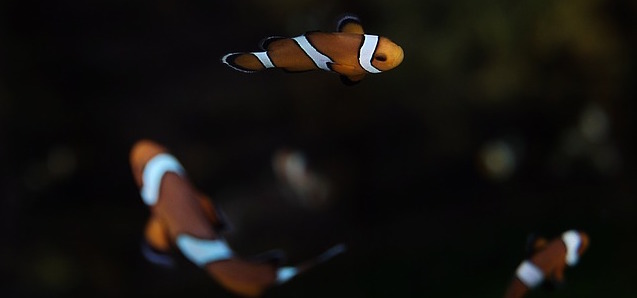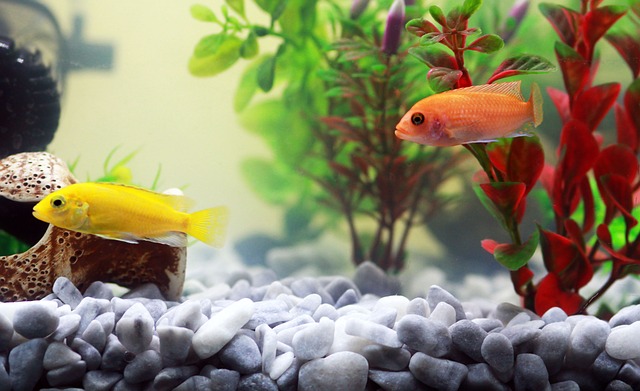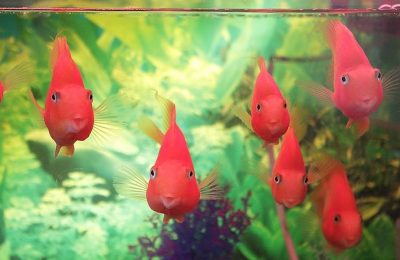It’s not always easy to buy and settle tropical fish. Here’s our essential list of do’s and don’ts to make the process as trouble-free as possible.
Do: choose compatible fish species
Deciding which species to buy and whether they can live happily together in the same tank requires some thought and good advice. There are a lot of specialist websites that offer good information, and one of the best places to start is on Aquariumfish.net – they list combinations of fish that could work well in the same tank.
Broadly speaking, you’ll find the most success settling fish that share similar characteristics and environmental preferences, such as water temperature, size of tank, and minimum number needed for a happy school. Certain species such as Tetras, Rasboras and Guppies can be prone to aggression, making them incompatible with your existing fish, while other species like certain Mbunas need a minimum sized school of at least 12 – all factors to take into consideration.
Don’t : overcrowd the aquarium
Stressed-out fish can quickly become sick fish, so avoid tank overcrowding. It can be tempting to continuously add new fish to the tank, but it’s a risky approach. Instead, add a few fish at a time over a period of days, gradually introducing newcomers to the existing aquarium. To prevent overcrowding, you should calculate the total capacity of the fish tank. The general rule of thumb for community tanks is one inch of fish for every litre of water.
Certain marine species, such as Angel fish, Anthias, Bass and Groupers tend to be territorial and have demanding space requirements. By carefully researching the species you’re interested in keeping you’ll be able to create a suitably sized aquarium habitat for you tropical fish.

"Ah, it's so lovely and spacious in here."
Do: make sure you buy your fish from a reputable vendor
Before buying tropical fish, it’s important to investigate the reputation of the breeder. Adding diseased fish to an aquarium can have catastrophic effects on the existing population of the tank. Be prudent when looking for a better deal on fish – prices may vary wildly, but the reputation and quality of a breeder is paramount if you’re introducing new fish to an existing tank. When you’re visiting an aquatic shop for the first time, start by looking for tell-tale signs of mishandling or neglect – injured, dead and depleted numbers of fish; dirty tanks and poor hygiene standards, and a lack of adequate lighting and coral are all giveaways. Ask the breeder if they use a quarantine tank, and ask to see it.
While it can be tough to gauge the health of fish purchased online, it’s not entirely impossible. First, check out the customer reviews online to get a sense of the vendor’s reputation. Then, look at the photos -are they stock photography or are they of the actual fish population? Don’t hesitate to ask questions or request additional photos or video of the specific fish you are considering. A reputable, competent breeder will be only too happy to help.
Don’t: forget to acclimatise your fish
Imagine how uncomfortable you’d be if you jumped into a pool whose temperature you weren’t ready for. Likewise the case for your tropical fish – never dump them into your new aquarium without acclimatising them first, or they could suffer shock, stress and potentially death.
Don’t worry if the fish do not appear to be alive in their transport bag. Fish often become inactive when they are moved from one place to another, but soon revive once they are in their new environment. But introduce them carefully; you should introduce them to the aquarium using the floating bag method. This is easy – simply keep the fish in the transport bag, and place the bag itself in the aquarium for 15 minutes so they adjust to the tank’s temperature.
Next, cut open the top of the bag, and allow the open bag to float in the tank, before gradually adding cupfuls of water from the tank into the bag every three or four minutes until the bag is full. Now it’s safe to net your new fish into the main tank and remove the bag and its transport water.

Tropical fish in tropical water









